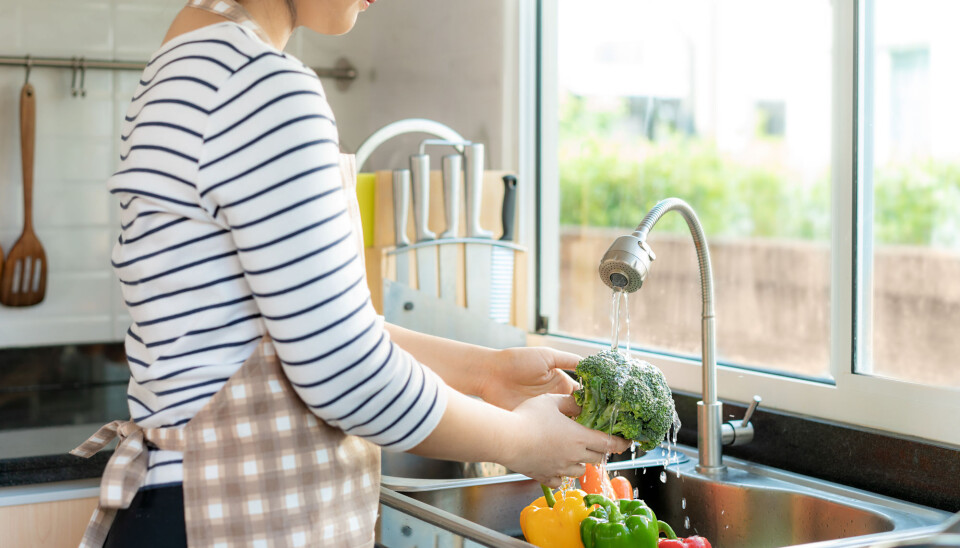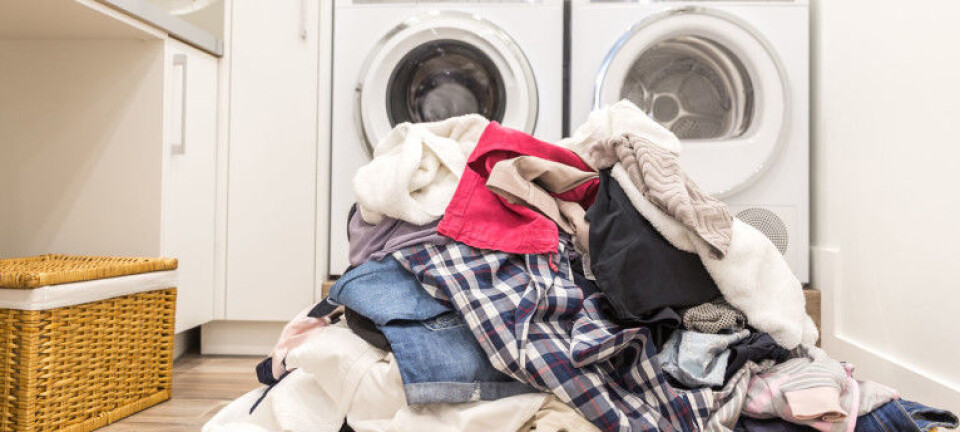This article was produced and financed by Oslo Metropolitan University - read more

Is your kitchen clean enough?
Every year, 5,000 Europeans die from diseases contracted from food. Researchers visited people’s homes and discovered both good and bad kitchen habits in different European countries.
Most of us know that we have to be careful about hygiene when preparing raw chicken. We should wash the utensils and our hands after handling chicken, and we should wash or use a different chopping board before chopping the vegetables for the salad.
There is a lot happening at the same time in the kitchen, and it is not always easy to remember to follow good hygiene advice.
"We have to remember that cooking is a complex social practice that is based more on routinised habits than on food safety advice", says Researcher Silje Skuland at Consumption Research Norway (SIFO), OsloMet – Oslo Metropolitan University.
Together with researchers in Norway, the UK, France, Portugal and Romania, she has mapped the shopping, hygiene and cooking habits of 75 European households. This is part of the big European research project SafeConsume, which is concerned with reducing the risk of foodborne diseases in private kitchens.
Everything you want to know
The work has resulted in an 800-page-long report on ‘everything you want to know about how food safety is addressed in everyday lives’, down to the smallest details.
Safe food is defined as foodstuffs that do not harm the consumer when prepared and/or consumed in accordance with the intended use.
Some of the questions the report answers are:
How do we wash lettuce? How and how often do we wash our hands? How do we wash our knives, chopping boards and other utensils? How do we transport, store and prepare our food? How do culture, habits and access to goods determine what we buy and how we prepare our food?
Comparisons between the five countries give the researchers knowledge about what food habits lead to the spread of bacteria and parasites.
Not just up to the consumers
WHO has determined that 23 million Europeans become ill and 5,000 die each year as a result of bacteria, parasites, allergens or toxins in food. Food’s journey from retail to fork has not been the subject of much research.
Skuland emphasises that consumers are not the only ones responsible for this.
"It's not the consumers’ fault that the food they buy in the shop contains Campylobacter bacteria or listeria. There is a tendency these days for consumers to be given the responsibility for fixing both environmental problems and public health challenges," she says.
Skuland believes the food should already be safe when it ends up in our shopping bags.
However, there are things we can do ourselves, since 40 per cent of cases of illness are caused by circumstances that the consumer can control.
Multitasking and cooking
The researchers went along when people did their shopping and followed them home to their kitchen where they prepared a meal of chicken and fresh vegetables. The goal was to find out how food was handled on its way from the shop to the table, which has been an under-researched area up until now.
According to experts on food safety, there is a correct way of preparing the meal used in the survey: First, you should completely finish preparing the vegetables. Then you prepare the chicken.
Most people do it the other way around, says Skuland. No wonder, perhaps, since the chicken usually takes longer to prepare.
‘People often do many things at once since they have so many things they have to take care of. Small children need your attention, and things just boil over.’
Backyard chickens and chicken fillet
Chickens and eggs can contain the Salmonella bacteria, which is common in some European countries. For example, many Southern Europeans buy eggs that come from backyard chickens from markets that are usually not subject to official control.
The biggest difference between the northern countries, Norway and the UK, and the southern countries, France, Portugal and Romania, is the types of chicken products we buy and the types of dishes we cook.
People in Southern Europe use more parts of the chicken and often roast it whole. In Northern Europe, we use chicken fillets that we cut into pieces and put in a sauce.
‘It’s difficult to cook a chicken fillet all the way through. It is cut and handled much more than a whole chicken or chicken thigh, and we are more likely to get it on our hands. People in northern countries therefore wash their hands more thoroughly after handling the chicken’, she says.
There are also big differences in where people in Northern and Southern Europe get their vegetables. In the South, people buy vegetables at the market or grow their own. In the Northern countries, we buy vegetables in grocery shops, most often wrapped in plastic.
Mix tea towels and chopping boards
It is not easy to turn good intentions into good actions. According to the food safety experts, even the most conscientious among us make mistakes, such as forgetting to use a new chopping board after cutting up chicken.
"Although some people have separate chopping boards and tea towels for different purposes, interruptions and stress can make it difficult for them to follow their own rules, and they end up mixing the towels and boards", says Skuland.
Furthermore, it cannot be expected that all European households have kitchen facilities that make it easy to handle food safely.
"For example, several households in rural Romania do not have indoor plumbing and cannot afford to keep the fridge on in winter", says Skuland.
Food is more than just sustenance
You would think that cooking is only a matter of following a recipe step by step, but it's not that simple.
"Cooking should rather be regarded as a social practice that is carried out slightly differently each time", says Skuland.
Food and meals are important to most of us and are much more important than just mere sustenance, according to the researcher.
"The food we eat must be good, healthy and home-made. We should preferably share it with someone we love. The importance of safe food is therefore in strong competition with all other food-related needs and considerations."
References:
Skuland, S. E. et al, (2020) European food safety: Mapping critical food practices and cultural differences in France, Norway, Portugal, Romania and the UK.
SIFO Report 6. ISBN: 978-82-7063-506-1. URL: http://hdl.handle.net/20.500.12199/3112. Oslo: Oslo Metropolitan University
———
Read the Norwegian version of this article on forskning.no


































